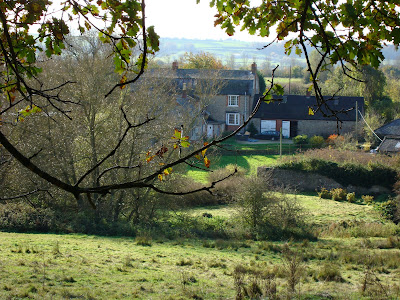 The marble statue of Charlotte Corday in the foyer of Swindon Dance
The marble statue of Charlotte Corday in the foyer of Swindon Dance-------
Today I wandered into the old Town Hall (see previous post 'The Old and the New') which is now occupied by Swindon Dance - I must start by thanking Barbara, working on reception, for showing me around and giving me the history of the wonderful marble statue that is by the entrance. The statue was carved in the 19th century by MICH' IORETTI and was donated to Swindon Borough council by Alderman Powell, a great supporter of the arts, sometime between the wars.
Here is the fascinating history of Charlotte Corday (1768-1793):
Charlottle Corday was born at Saint-Saturnin, France on July 27th 1768 - she considered herself devoted to the 'enlightened' ideals of her time but was a supporter of the monarchy when the French Revolution began in 1789.
As the revolution progressed, factions arose within the national convention. Corday favoured the more moderate Girondins rather than men such as Marat and Robespierre who wanted to destroy the monarchy. The Girondins were expelled from the convention in early summer 1793 and took refuge at Caen - Corday then went to Paris and devised a plan to gain access to Marat where, on July 13th 1793, she stabbed him in the heart while he was in the bath-tub. She was immediately apprehended and executed on July 17th 1793.
Edit made 8/12/08: Graham Carter who has helpfully commented on this blog in the past sent me the lyrics to an Al Stewart/Tori Amos song - called Charlotte Corday: Thank you once again Graham for your input and knowledge, here are the lyrics.
If you hear a step upon
Your stair tonight
If you see a shadow in
The candle light
It's only your imagination
Leading you astray
See her for a moment
Then she'll slip away
The ghost of Charlotte Corday
She wanders down the hallway
In a long black dress
And lingers by the fireplace
Like a faint caress
Just what it is that brings her here
No man alive can say
See her for a moment
Then she melts away
The ghost of Charlotte Corday
Stars in the window like a panoply
Covering everything
River of night
Stars in the window
See them shining for
Anyone else, anyone else
The clock ticks in the dark and now
The night is still
The air is like a murmur
On the window sill
All at once there's someone there
That only you can see
Seeking the forgiveness
That will set her free
The wind has taken away
The words she wanted to say
The sky is now turning grey
The dawn is turning away
The ghost of Charlotte Corday
 The beautiful stained glass windows on the staircase
The beautiful stained glass windows on the staircase

 The above window was made and donated in 1987 by stained glass artist John Hayward FSMGP. He has beautiful windows in churches all over London and in Sherbourne Cathedral where he lived until his death in May 2007.
The above window was made and donated in 1987 by stained glass artist John Hayward FSMGP. He has beautiful windows in churches all over London and in Sherbourne Cathedral where he lived until his death in May 2007. A detail from a window made in remembrance of Fitzroy Pleydell Goddard - it was the Goddard family who donated the hill-top site for the church built in 1851 (architect Sir George Gilbert Scott).
A detail from a window made in remembrance of Fitzroy Pleydell Goddard - it was the Goddard family who donated the hill-top site for the church built in 1851 (architect Sir George Gilbert Scott). 


















































